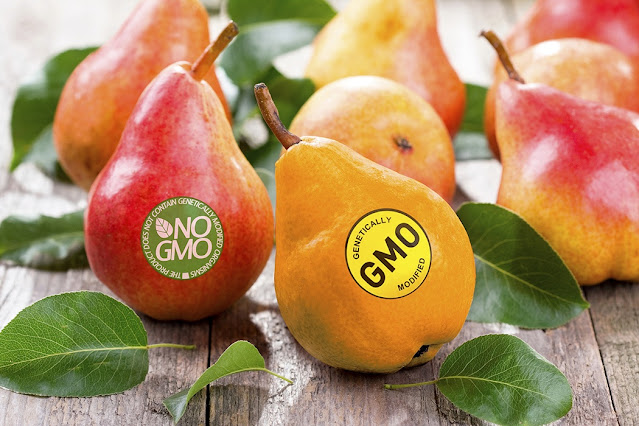Genetically modified crops - the solution for Ethiopia? (Part I)
In my previous blog, I addressed some of Uganda’s most prevalent problems regarding climate change: droughts and the lack of food security. This week, we will begin by exploring the case of genetically modified crops in Ethiopia.
As many nations in Africa are in a race against time to discover ways of securing food production, discussions around the role of genetically modified crops are becoming increasingly prevalent, and may be considered a potential solution. But what exactly is GMO? Genetically modified organisms (GMOs) are those in which their DNA have been genetically engineered and modified to create genetic combinations that do not occur naturally. By genetically modifying crops, it may potentially allow for improved crop yield and increased efficiency in food production systems. Some examples of existing genetically modified crops include disease- and drought- resistant plants, which offer a rather substantial promise to tackle some of the greatest challenges facing African nations in the 21st century.
Here's a video that gives a quick introduction to what GM crops are about:
Introducing Ethiopia
Similar to Uganda, Ethiopia suffers from many of the same problems that stem from climate change - rising temperatures, unpredictable weather events and increasing droughts, hindering sustainable food production. Despite the agricultural sector being the driving force of the Ethiopian economy, they continues to be one of the many African nations struggling to feed its growing population. More recently, the Tigray civil conflict has further worsened Ethiopia’s famine conditions by creating a socially and politically unstable environment.
However, what characterises the Ethiopian agricultural sector is the subsistence-oriented production system - which results in small-scale farmers having minimal purchased farm inputs. This, coupled with the increasing pressures from water salinity, parasitic weeds and plant pests and diseases such as the most recent fall armyworm have plagued Ethiopian crop production, making it even more important for Ethiopia to turn towards agricultural technologies such as GM crops to feed the ever-increasing food insecure citizens.
The case of TELA Maize in Ethiopia
Maize continues to be one of the most dominant cereal crops in Ethiopia - grown by around 8 million smallholder farmers, thus playing a central role in the livelihoods and food security of Ethiopian farmers. Despite the continued growth of maize production over the last few decades, Ethiopian maize yield still falls around two-thirds below the world average. In order to address the nation’s food security problems, the Ethiopian government has approved a field trial of drought-tolerant and pest-resistant TELA maize in 2015.
As a result, the TELA Maize Project was established to commercialise different varieties of genetically modified drought-tolerant and pest-resistant maize. It is projected that the GM maize may potentially yield up to 10 tonnes per hectare during favourable conditions, and roughly 3-4 tonnes per hectare during drought-tolerant circumstances. This makes it a significant jump from the estimated 3.6 tonnes per hectare during regular conditions, and 1 ton during unfavourable conditions. This new TELA maize variety can bring bountiful benefits to Ethiopian farmers. Not only does it ensure adequate amounts for farmers to feed their own families with better grain quality, but a surplus production allows them to expand beyond subsistence farming to earn additional income. This may bring long-term sustainable benefits such as investing to bring further improvements to their farming practices.
As a result, the TELA Maize Project was established to commercialise different varieties of genetically modified drought-tolerant and pest-resistant maize. It is projected that the GM maize may potentially yield up to 10 tonnes per hectare during favourable conditions, and roughly 3-4 tonnes per hectare during drought-tolerant circumstances. This makes it a significant jump from the estimated 3.6 tonnes per hectare during regular conditions, and 1 ton during unfavourable conditions. This new TELA maize variety can bring bountiful benefits to Ethiopian farmers. Not only does it ensure adequate amounts for farmers to feed their own families with better grain quality, but a surplus production allows them to expand beyond subsistence farming to earn additional income. This may bring long-term sustainable benefits such as investing to bring further improvements to their farming practices.
However, genetically modified maize do not come without their downfalls... My next blog will further explore some of the challenges that Ethiopia may face.


Comments
Post a Comment